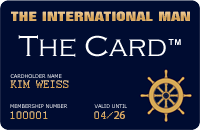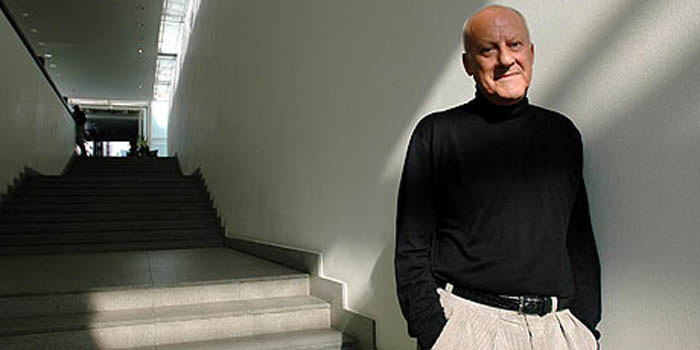Top 200 Best High-End Architects - Past and Present
"Architecture is the art of capturing noble simplicity." - Jørn Utzon.
An ARCHITECT is a person trained and licensed to plan, design, and oversee the construction of buildings. To practice architecture means to provide services in connection with the design and construction of buildings and the space within the site surrounding the buildings, that have as their principal purpose human occupancy or use. Professionally, an architect's decisions affect public safety, and thus an architect must undergo specialized training consisting of advanced education and a practicum (or internship) for practical experience to earn a license to practice architecture. Practical, technical, and academic requirements for becoming an architect vary by jurisdiction.
Throughout ancient and medieval history, most architectural design and construction was carried out by artisans - such as stone masons and carpenters, rising to the role of master builder. Until modern times there was no clear distinction between architect and engineer. In Europe, the titles architect and engineer were primarily geographical variations that referred to the same person, often used interchangeably.
It is suggested that various developments in technology and mathematics allowed the development of the professional 'gentleman' architect, separate from the hands-on craftsman. Paper was not used in Europe for drawing until the 1400s, but became increasingly available after 1500. Pencils were used more often for drawing by 1600. The availability of both allowed pre-construction drawings to be made by professionals. Concurrently, the introduction of linear perspective and innovations such as the use of different projections to describe a three-dimensional building in two dimensions, together with an increased understanding of dimensional accuracy, helped building designers communicate their ideas. However, the development was gradual. Until the 1700s buildings continued to be designed and set-out by craftsmen, with the exception of high status projects.
In most developed countries, only qualified persons with appropriate licensure, certification, or registration with a relevant body, often governmental may legally practice architecture. Such licensure usually requires an accredited university degree, successful completion of exams, and a training period. The use of terms and titles, and the representation of oneself as an architect is restricted to licensed individuals by law, although in general, derivatives such as architectural designer are not legally protected.
To practice architecture implies the ability to practice independently of supervision. The term building design professional (or Design professional), by contrast, is a much broader term that includes professionals who practice independently under an alternate profession, such as engineering professionals, or those who assist in the practice architecture under the supervision of a licensed architect, such as architectural technologists and intern architects. In many places, independent, non-licensed individuals may perform design services outside the professional restrictions, such design houses and other smaller structures.
Architect News, Reviews & Resources
- 2 World Trade Center getting revamped Norman Foster design - "Get ready for Two World Trade Center, Version 3.0. Larry Silverstein and architect Norman Foster are working on major changes to Foster’s original vision for the still-unbuilt skyscraper."
- 7 Leading Architects Defend the World’s Most Hated Buildings - The New York Times.
- 8 buildings that will shape architecture in 2021 - "The transformative buildings set to shape the world in 2021."
- 8 famous architects in the modern & contemporary era - "With big ideas and distinct philosophies, some architects have crafted spaces defining eras, cultures, and the essence of human experience. They have eternally etched their names in history, so this exploration will highlight 8 famous architects whose legacy reflects their profound contributions to architecture."
- 8 houses built in impossible places - "Architecture can flirt with nature in expressive yet subtle ways. The idea in architecture is often to harmonize, not dominate, the landscapes. This can prove a challenge, however, when faced with steep slopes, cliff faces and mountainsides."
- 8 of the world's most stunning micro-houses - "With living costs at an all-time high, increasing urban density and greater interest in downsizing and simplifying our lives, the small-house movement has taken reign within the architecture industry."
- 10 greatest modern architects of our time - Style of Design.
- 10 new spectacular HQs in China designed by international architecture firms - "From Shenzhen to Beijing, the economic power of Chinese companies is represented through the spectacular 'globalized' architectures of Zaha Hadid Architects, Foster + Partners, BIG and others."
- 10 of the greatest architectural views on Earth - The Telegraph.
- 10 of the world's most beautiful modern houses - "From a Modernist desert retreat to a camouflaged turf lodge, a new book, Houses: Extraordinary Living, explores the diversity of some of the world’s most awe-inspiring abodes."
- 10 statement buildings that never got built - "After Foster + Partners' design for the Tulip tower was recently rejected by the UK government, we round up 10 other high-profile building projects that were never actually built."
- 10 unrealized masterpieces of architecture - Legendary but never built - "From Gaudí’s skyscraper for New York to Libeskind’s Potsdamer Platz, we've selected 10 projects that, even without ever seeing the light, have made history."
- 11 architecture projects set to shape the world in 2025 - "The past year has seen the opening of the world’s second-tallest skyscraper, the reopening of Notre Dame Cathedral and the announcement of countless futuristic urban mega-projects. Yet, the architecture world has, increasingly, recognized the value of altogether humbler pursuits."
- 11 GORGEOUS GIFTS FOR THE ARCHITECTURE BUFF - Wired.
- 11 Most Beautiful Modernist Buildings in the World - "Designed by visionaries such as Frank Lloyd Wright, I.M. Pei, and Le Corbusier, these structures reinvented architecture as it was then known."
- 11 Stunning Homes Built Into Nature - "From Albert Frey's house built into a mountain to John Lautner’s iconic Sheats-Goldstein residence in L.A., these structures take the term ‘back to nature’ to another level. If there is one architect who arguably pioneered the concept of building cool houses into natural landscapes, it’s Frank Lloyd Wright. The serene Fallingwater home in Mill Run, Pennsylvania, made a serious case for living in nature, and since the house was erected in 1935, plenty of architects have taken a page from Wright’s book."
- 12 buildings that demonstrate the breadth of shipping-container architecture - "Following the unveiling of a stadium in Qatar made from 974 containers, we have rounded up 12 diverse projects that make use of the shipping containers including buildings by BIG and Kengo Kuma."
- 15 Tallest Buildings in the World in 2025: See the Top 15 - "Reaching high into the sky, these marvels of engineering and design will fascinate more than just the architecture lover: 1. Burj Khalifa (Dubai, United Arab Emirates). The Burj Khalifa in Dubai is the tallest building in the world."
- 17 incredible buildings opening in 2018 - The Telegraph.
- 18 of the world's greenest buildings - "18 examples of sustainable architecture around the world."
- 25 incredible skyscrapers of the future - The Telegraph.
- 25 UNESCO World Heritage Sites to Add to Your Architecture Bucket List - "Consider this your cheat sheet to the UNESCO World Heritage List."
- 25 Masterpieces That Prove 2016 Was an Incredible Year for Architecture - Wired.
- 100 Largest Architecture Firms In the World - ArchDaily.
- $400m ceramic skyscraper can 'breathe' - "The supertall ceramic tower that 'breathes'."
- 2020's most anticipated new buildings - "The most anticipated buildings set to shape the world in 2020."
- 2024: The new architecture set to shape the world - "From garden towers to the world’s longest cantilever, these new buildings will shape 2024."
- A $1.5 Million Frank Lloyd Wright Home Lists for the First Time in 70 Years - "The property is the only single-family design in Milwaukee by the late architect."
- A. Eugene Kohn, architect of soaring skyscrapers, dies aged 92 - "In a statement, Kohn Pedersen Fox (KPF), whose best-known projects include New York's One Vanderbilt and the Shanghai World Financial Center, described Kohn's architectural legacy as 'enduring.'"
- A homecoming for the metal house once considered the future of American architecture - "Now part of the permanent collection at the Palm Springs Art Museum, the story of Albert Frey's 'Aluminaire House,' and its significance in the history of architecture is quite remarkable."
- A pictorial journey through the work of acclaimed architect I.M. Pei - New Atlas.
- A tale of two cities: Paris proves that you don’t need skyscrapers to thrive - "A ban on high-rise buildings contrasts with Britain’s ever thrusting capital."
- A tropical city with unforgettable architecture - "10 famous buildings in Singapore."
- A vision in concrete: Oscar Niemeyer’s Brazil - "As Brasília turns 60, it’s time to reassess the legendary modernist architect on a visit to the Brazilian capital and Rio de Janeiro."
- Abu Dhabi's unusual architecture delivers surprises - "From its Bedouin past as a modest fishing and pearl diving port to the discovery and production of oil, Abu Dhabi has risen from the sands along the Arabian Gulf to become one of the world's wealthiest cities."
- Adam style - (or Adamesque and "Style of the Brothers Adam") is an 18th-century neoclassical style of interior design and architecture, as practised by Scottish Architect William Adam, and his sons, particularly Robert Adam (1728–1792), James Adam (1732–1794), of whom Robert and James were the most widely known. The Adam brothers advocated an integrated style for architecture and interiors, with walls, ceilings, fireplaces, furniture, fixtures, fittings and carpets all being designed by the Adams as a single uniform scheme. Commonly and mistakenly known as "Adams Style," the proper term for this style of architecture and furniture is the "Style of the Adam Brothers."
- Africa's iconic architecture in 12 buildings - "While the pyramids of Egypt are recognised around the world, much of Africa's architecture remains unknown - something architects Adil Dalbai and Livingstone Mukasa hope to change."
- AMERICA'S FAVORITE ARCHITECTURE - the top 150 chosen by The American Institute of Architects.
- An architect asked AI to design skyscrapers of the future. This is what it proposed - "Manas Bhatia has a bold vision of the future - one where residential skyscrapers covered in trees, plants and algae act as 'air purification towers.' In a series of detailed images, the New Delhi-based architect and computational designer has brought the idea to life. His imagined buildings are depicted rising high above a futuristic metropolis, their curved forms inspired by shapes found in nature. But the pictures were not entirely of his own imagination."
- ARCHITECT - Wikipedia.
- Architect Alex Nerovnya Discusses Futuristic Compound Concept For L.A.’s Enchanted Hill - "There are things you can do when a property doesn’t sell: finish major repairs, add new paint or even change up the staging. But what do you do when the property is a massive hilltop? Turn to social media, of course."
- Architect Cesar Pelli dies after a storied career designing iconic buildings - "Among his most famous works: the colorful Pacific Design Center in West Hollywood, California, and the Petronas Towers in Kuala Lumpur, Malaysia, which won him the Aga Khan Award for Architecture."
- Architect unveils striking proposal for 'green' Notre Dame - "The rebuilt Notre Dame could feature a futuristic glass design, solar power, and an urban farm that supports vulnerable and homeless Parisians, if one architecture firm's vision is realized."
- architects & designers to have on your radar in 2025 - "Otherworldly Swiss chalets and celebrity home renovations."
- Architectural adventures in the Alps - in pictures - "After months of isolation in 2020, the Leipzig photographer Albrecht Voss asked his oldest friend to join him on an adventure through the Alps taking pictures of modern architecture. With just 20 days to capture 28 buildings in Slovenia, Austria, Switzerland and Germany, the project involved scaling glaciers in the dark and sleeping in empty chapels."
- Architectural photos of 1970s Dubai show the birth of the modern city - "Dubai's skyline is adorned with record-breaking buildings. From the world's tallest building - the 828-meter-tall (2,716-foot) Burj Khakifa - to the world's tallest hotel - the 356-meter-tall (1,168-foot) Gevora Hotel - ambitious architectural projects populate the city. These buildings are designed to give Dubai a reputation for architectural splendor, part of the city's pursuit of international recognition - currently exemplified by the World Expo it's hosting for the next five months. However, Dubai's desire for attention is not new. The desert city set out on its quest to become a place of architectural eye candy in the mid 1970s, when construction began on Dubai World Trade Centre, according to architect Todd Reisz, author of 'Showpiece City: How architecture made Dubai'."
- architecture after coronavirus - "Is the open-plan office dead? Can skyscrapers survive? Will our phones control everything from the lights to ordering coffee? Our writer meets the architects already shaping the post-Covid-19 world."
- Architecture Classics: Villa Savoye / Le Corbusier - "Situated in Poissy, a small commune outside of Paris, Villa Savoye is one of the most significant contributions to modern architecture in the 20th century. Completed in 1929, Le Corbusier's masterpiece is a modern take on a French country house that celebrates and reacts to the new machine age."
- ARCHITizer - platform for 125,000+ architects & designers to showcase their talents and find clients.
- Arizona home designed by Frank Lloyd Wright before his death sells for $1.7m - "Midcentury home, the last designed before the architect’s death, is nestled on the edge of a mountain preserve."
- Arne Hasselqvist - "Architect Created Celebrity Homes."
- Art Deco: How Discovery, Invention & Fashion Created a Movement - "Art Deco or Arts Décoratifs originated in the 1920's, following the Exposition Internationale des Arts DÉcoratifs et Industriels Modernes held in Paris (1925). However, it wasn’t until the 1930’s that the movement gained momentum across both Europe and the US, broadening Art Deco to cover all elements of decorative art including furniture, interior design, jewelry and architecture. Its popularity stems from its unique origins. Rather than a design movement driven by political or philosophical forces, it was created for the desire of glamorous and alluring change, a reflection of the golden age in Hollywood and a widespread economic boom."
- Art Gensler, founder of the world's largest architecture firm, has died aged 85 - "Gensler, whose eponymous practice designed many of the world's best-known buildings - from China's tallest skyscraper to terminals at San Francisco International Airport - passed away on Monday at his home in Mill Valley, California, following a battle with long-term illness, a company spokesperson confirmed."
- Asia’s largest timber building - "Singapore has long billed itself as a 'garden city,' a term coined in the 1960s by the country’s founding father and former prime minister, Lee Kuan Yew. In the decades since, the island has embarked on extensive tree-planting programs and embraced so-called 'biophilic' architecture, with greenery often seen creeping up urban facades or spilling out from skyscrapers. A new six-story college campus building stands as Singapore’s latest ode to nature. Home to Nanyang Technological University’s (NTU) business school, the gently curved design features sunlit atriums, open-air study areas set against lush backdrops and elevators that descend into beds of tropical plants. Everything from handrails to benches, door frames to room dividers (and even an adjoining bus stop), were built using wood."
- Atlas of Never Built Architecture - "A comprehensive global survey of more than 300 extraordinary unbuilt architecture projects from the 20th century to the present day."
- Balcony House - Bassico Arquitectos - "The house is an extensive balcony to always be related to the valley, the mountains, the sunsets, the night, the distant city, the changing landscape."
- Barcelona’s ‘other’ great architect: five of his finest buildings - "Catalonia’s design gems don’t begin and end with Gaudí. The works of Lluís Domènech i Montaner deserve a closer look on the centenary of his death."
- Barcelona's unloved planner invents science of 'urbanisation' - The Guardian.
- BAUHAUS - was a German art school operational from 1919 to 1933 that combined crafts and the fine arts, and was famous for the approach to design that it publicised and taught.
- Bauhaus at 100: what it means to me by Norman Foster, Margaret Howell and others - "As the influential design school turns 100, architects, designers and other creatives talk about how its ideas have shaped their work."
- Bauhaus in pictures: The architects exiled by Nazis - "Established in 1919, in the wake of World War One, Germany's Bauhaus art school brought a radical new approach to design and aesthetics which would eventually go on to help inform modernist architecture around the world. Now in its centenary year, we look at a selection of some of the buildings shaped by the influential art school."
- best architecture of 2016 - The Guardian.
- best architecture of the 21st century - "A flying roof, a bamboo airport, a marooned galleon and a park in the sky ... continuing our series, we pick the 25 greatest builds of the new age."
- ‘Better ugly than boring’: book celebrates bizarre Belgian houses - "Hannes Coudenys’ Ugly Belgian Houses updated with more from the ‘chaos known as Belgium’."
- Biophilic design - concept used within the building industry to increase occupant connectivity to the natural environment through the use of direct nature, indirect nature, and space and place conditions.
- Bold Ventures by Charlotte van den Broeck review - architects of their own demise - "A poetic tale of 13 flawed buildings that spelled catastrophe for their designers."
- Building for a flooded future: Architects are designing for the new climate reality - "Climate change is making cities more susceptible to flooding. According to a 2019 study, global sea levels are expected to rise between two and seven feet over the course of the century; by 2100, at least 190 million people could be living in areas below the projected high-tide line."
- Building Zaha Hadid’s Bold Afterlife - The New York Times.
- buildings constructed from cannabis - "In search of sustainable materials, architects are turning to an unusual source: hemp."
- Buried in concrete: mafia architecture - in pictures - "Alessio Mamo has photographed the illegal, brutalist buildings and gaudy, now decaying, villas in the south of Italy that mafia bosses constructed."
- Burj Khalifa designer shares the secrets of building supertall - "How to build supertall: Designers of the world's tallest towers share their secrets."
- Chicago school - Chicago's architecture is famous throughout the world and one style is referred to as the Chicago School. Much of its early work is also known as Commercial style. In the history of architecture, the first Chicago School was a school of architects active in Chicago at the turn of the 20th century.
- China Moves to Halt ‘Weird’ Architecture - The New York Times.
- China's smaller cities go wild for starchitecture - The Guardian.
- Chrysler Building is an Art Deco icon - "The Chrysler Building has become emblematic of the Art Deco period - and was one of the era's last architectural triumphs before the Great Depression halted New York's rapidly-changing skyline. It only had the distinction of being the world’s tallest building for 11 months."
- Chrysler Building, the Jewel of the Manhattan Skyline, Loses Its Luster - "Is the building’s reputation enough for it to endure as an icon, even as its ownership and interior crumble?"
- Classical architecture - Wikipedia.
- Cour d'honneur - (court of honor) is the architectural term for a three-sided ceremonial courtyard, created by flanking the main central block, or corps de logis, with symmetrical advancing secondary wings containing minor rooms. The Palace of Versailles and Blenheim Palace both feature such entrance courts.
- Dear Architects: Sound Matters - The New York Times.
- Entasis - "A lie that tells the truth." In architecture, entasis is the application of a convex curve to a surface for aesthetic purposes. Its best-known use is in certain orders of Classical columns that curve slightly as their diameter is decreased from the bottom upward. It also may serve an engineering function regarding strength.
- Fendi: back to the future - new Roman palace of modernism.
- Folly - in architecture, a folly is a building constructed primarily for decoration, but suggesting through its appearance some other purpose, or of such extravagant appearance that it transcends the range of garden ornaments usually associated with the class of buildings to which it belongs.
- Frank Gehry at 90: ‘I love working. I love working things out’ - "He didn’t hit his stride till he was 50, and now the architect, as inventive and bold as ever, hangs out with everyone from Harrison Ford to Jay-Z."
- Frank Gehry sees end to 'bombastic' monuments as Eisenhower tribute unveiled - "Architect, 91, tells Guardian the statues going up today are ‘fairly modest compared to the ones coming down’."
- Frank Gehry's Dynamic Reflective Tower Opens to the Public for the First Time - "Frank Gehry's long awaited LUMA Arles has finally opened its doors to the public. The stainless-steel-clad tower with a twisting geometric structure sits in a 27-acre creative campus at the Parc des Ateliers in the French city of Arles, housing exhibition galleries, project spaces, and the LUMA’s research and archive facilities."
- Frank Lloyd Wright designed the Guggenheim Museum & this 12-year-old boy's dog house - "Famed American architect Frank Lloyd Wright designed iconic buildings like the Fallingwater house in Pennsylvania and the Guggenheim Museum in New York - and he also designed a dog house for a 12-year-old boy who sent him a letter."
- Frank Lloyd Wright's School of Architecture at Taliesin to close - "School will shutter in June after no agreement could be made with foundation to keep operating the facility, the governing board said."
- GIANT ORDER - in classical architecture, a giant order (also known as colossal order) is an order whose columns or pilasters span two (or more) stories.
- Golden Ratio / Divine Proportion - in mathematics, two quantities are in the golden ratio if their ratio is the same as the ratio of their sum to the larger of the two quantities. Some twentieth-century artists and architects, including Le Corbusier and Dalí, have proportioned their works to approximate the golden ratio - especially in the form of the golden rectangle, in which the ratio of the longer side to the shorter is the golden ratio - believing this proportion to be aesthetically pleasing.
- great buildings - "Architecture Week." Presenting one thousand selected classics of world architecture, and hundreds of their great designers, in the leading general architecture reference site.
- Guggenheim effect: how the museum helped transform Bilbao - "The Basque city locals remember as grimy and industrial has changed a lot since the Frank Gehry-designed building sprang up 25 years ago."
- Guide to Residential Styles - "Every house has a style. Sometimes it has two or more; because of renovations and new, eclectic mixes, fitting a home into one specific category can be daunting or even impossible. Thankfully, there’s no need to memorize complicated architectural terminology. REALTOR Magazine has compiled a convenient compendium of common styles. Delve in and learn to highlight the details that give a home character, history, and romance."
- Holdout - piece of property that did not become part of a larger real estate development because the owner either refused to sell or wanted too much.
- Horror on the Hudson: New York's $25bn architectural fiasco - "It is a billionaires’ playground where haircuts cost $800 and high-rise duplexes go for $32m. So why do the angular towers of Hudson Yards look so cheap?"
- How '15-minute cities' will change the way we socialise - "A new urban planning model will change the French capital – and could provide a template for how to create stronger local communities and make residents happier."
- How Architect I.M. Pei Achieved Greatness By Forever Testing and Challenging Himself - TIME Magazine.
- How cities will fossilise - "The modern metropolis will leave a geological legacy that will last for millennia, but as the author David Farrier writes, some things will endure far longer than others."
- How coders are creating the homes of the future - "The smart home revolution is rapidly changing the way we will live with technology in the future, making computer programmers as essential to the design process as architechts. Software engineer Charles Gutjahr completely transformed his 100-year-old house into an amazing, state-of-the-art smart home, setting the bar for how we could all be living in the future."
- how Hitler's plans for Germania would have torn Berlin apart - The Guardian.
- How Jefferson Learned Architecture - The New York Times.
- How to build supertall: Designers of the world's tallest towers share their secrets - "The world's tallest building casts a long shadow. For more than a decade now, the 828-meter (2,717 ft) high Burj Khalifa has reigned over Dubai's skyline and architecture's collective conscious. It didn't just break the record; 62% taller than its predecessor, Taipei 101, it obliterated it. Its legacy has been remarkable - and remarkably useful to the man who designed it."
- How to Photograph Architecture with a 35mm Camera - "This series of unedited photographs of modern works located in Latin America were captured on Fuji film 200 ISO 35mm film using a Canon Prima Point-and-Shoot, with a fixed 35mm lens. It has that name because you look and shoot, everything is automated, except the focal distance, which means that just like in real life if you want to see something up close or in this case photograph it, you will have to get closer or move further away, it 'encourages' you to be more creative."
- I Spent Two Nights at Frank Lloyd Wright’s Taliesin & Found His Spirit Everywhere - "If Taliesin is an 'architectural autobiography,' then sleeping in the home made me reevaluate the American legend."
- Incredible Sydney Opera House design secret wows the internet - "Architects found an ingenious solution for the project. The Sydney Opera House's shells proved to be impossible to make, until the architect realised that they could be produced as sections of a sphere."
- Inside the Big Lebowski house - The Guardian.
- Inside the spectacular home Frank Gehry built for himself - "The house a top architect designed for himself."
- Islamic architecture - Wikipedia.
- Japanese architect wins the 'Nobel' of architecture - "Pritzker Prize 2019: Arata Isozaki wins 'Nobel of architecture'."
- LANDSCAPE ARCHITECT - Wikipedia.
- Lazzarini design studio - "Think about the future never forget the past . . ."
- List of architects - Wikipedia.
- LIST OF ARCHITECTURE FIRMS - Wikipedia.
- LIST OF FAMOUS AND NOTABLE ARCHITECTECTS - Wikipedia.
- Little Building Co. - "At the Little Building Co we aim to make the finest architectural model kits we can. We hope they are something you will enjoy assembling, take pride in owning and treasure for years to come."
- Longest bridges around the world - in picyures - The Guardian.
- Lord Norman Foster - "‘I still get the same buzz from designing buildings.’"
- Meet the Chinese architects behind this unusual new concert hall - "The couple's latest project is a case in point. Nestled in a valley northeast of Beijing, a stone's throw from the Great Wall, the boulder-like Chapel of Sound looks as if it were carved from the landscape itself. The architects added local rocks to the concrete and mimicked sedimentary layers to help assimilate the structure with its surroundings."
- Meet Yahya Jan, the architect building the world's tallest hotel, Dubai's Ciel Tower - "If you look out onto the Dubai skyline, you're likely to be admiring the work of Yahya Jan. He is president and design director of architecture and engineering firm NORR, which is behind some of the city's best-known landmarks, including the Atlantis and Shangri-La Hotels."
- METRO ARTS & ARCHITECTURE - a guide to the fifty most beautiful subway systems in the world.
- Modi the fanatic is using the coronavirus crisis to destroy India's heritage - "A disastrous redevelopment of Lutyens’ parliament buildings in Delhi is being rushed through to cement the PM’s legacy."
- Nakagin Capsule Tower to be Demolished Mid-April - "Following months of uncertainties and preservation attempts, Kisho Kurokawa's iconic Nakagin Capsule Tower will be demolished on April 12th of this year. Tatsuyuki Maeda, one of the current owners of the tower, explained that a team will try to preserve some of the capsules, and regenerate them as accommodation units and museum installations across the world."
- National Building Museum - Washington, D.C. Since 1985: "Telling the stories of architecture, engineering, and design." Museum of "architecture, design, engineering, construction, and urban planning".
- 'New Elizabethan': The Queen's reign heralded a new era for architecture - "In architecture, where the palatial country houses of Elizabeth I's England were superseded by such unassertive yet inspired designs as the prefabricated schools rushed up by local government architects. Evidently, the architectural landscape of Queen Elizabeth II's United Kingdom was to be very different."
- Olafur Eliasson: 'the vast majority of architecture is trash' - The Telegraph.
- On the Bauhaus Trail in Germany - The New York Times.
- Organic architecture - philosophy of architecture which promotes harmony between human habitation and the natural world. This is achieved through design approaches that aim to be sympathetic and well-integrated with a site, so buildings, furnishings, and surroundings become part of a unified, interrelated composition.
- Our cities may never look the same again after the pandemic - "From Auckland to Bogota, urban planners are already adapting our cities to lockdown. But will the changes last, and which more radical design proposals - be it sewer monitors or 'epidemic skyscrapers' - will shape the post-pandemic city?."
- Palladian architecture - Wikipedia.
- Palazzo style architecture - architectural style of the 19th and 20th centuries based upon the palazzi (palaces) built by wealthy families of the Italian Renaissance. The term refers to the general shape, proportion and a cluster of characteristics, rather than a specific design; hence it is applied to buildings spanning a period of nearly two hundred years, regardless of date, provided they are a symmetrical, corniced, basemented and with neat rows of windows.
- Prairie School - is a late 19th- and early 20th-century architectural style, most common in the Midwestern United States. The style is usually marked by horizontal lines, flat or hipped roofs with broad overhanging eaves, windows grouped in horizontal bands, integration with the landscape, solid construction, craftsmanship, and discipline in the use of ornament. Horizontal lines were thought to evoke and relate to the wide, flat, treeless expanses of America's native prairie landscape.
- ‘Really cool, day or night’: readers’ top modern European architecture - "From a giant Gulliver in Spain to a sleek basking whale in Budapest, readers tip 10 destinations with stunning contemporary buildings." The Guardian.
- Remembering America's lost buildings - The Guardian.
- RIBA | ROYAL INSTITUTE OF BRITISH ARCHITECTS - champions better buildings, communities and the environment through architecture and our members.
- Richard Rogers, groundbreaking architect, Obituary - "Lord Rogers of Riverside obituary. Architect whose radically innovative buildings included the Pompidou Centre and the Lloyd’s of London building."
- Singapore's first 'supertall' skyscraper unveiled - "Singapore is set to welcome its first ever 'supertall' skyscraper, a term used to describe buildings that exceed 300 meters (984 feet) in height. The new tower, known as 8 Shenton Way, will soar above the Southeast Asian city-state from 2028, offering offices, a hotel and 34 floors of luxury residences."
- SKYSCRAPER NEWS - skyscrapers, cathedrals, modern architecture database, news, information and images.
- SKYSCRAPERPAGE.COM - "The world's finest resource for skyscraper and urbanism enthusiasts. A one-stop resource for the skyscraper enthusiast in everyone."
- Space Syntax - encompasses a set of theories and techniques for the analysis of spatial configurations. It was conceived by Bill Hillier, Julienne Hanson, and colleagues at The Bartlett, University College London in the late 1970s to early 1980s to develop insights into the mutually constructive relation between society and space. As space syntax has evolved, certain measures have been found to correlate with human spatial behavior, and space syntax has thus come to be used to forecast likely effects of architectural and urban space on users. Space syntax has grown to become a tool used around the world in a variety of research areas and design applications in architecture, urban design, urban planning, transport and interior design.
- Stairways to modernist heaven - in pictures - "Architecture obsessive Adam Štěch has photographed the interiors of over 5,000 modern gems around the globe, from hunting lodges to high-rises. Ahead of a new exhibition, he shares his favourite flights of fancy."
- Stalin’s Architect by Deyan Sudjic review - a momumental life - "His work helped define the grand style of Soviet buildings, but was Boris Iofan a stooge, a propagandist or a victim of circumstance? His story makes for fascinating reading."
- SYDNEY OPERA HOUSE GETS REDESIGNED BY 10 ICONIC ARCHITECTS USING AI FOR ITS 50TH ANNIVERSARY - "You can tell how iconic a building is by A. How many people pose in front of it, but more so by B. How many magnets/keychains get made with the building on it. Paris has the Eiffel, NY has the Statue of Liberty, Agra has the Taj Mahal, and Sydney has the Opera House. Designed by Danish architect Jørn Utzon, the iconic multi-venue performing arts center was officially opened on October 20, 1973, becoming an indelible part of the city’s skyline with its modern expressionist style. This year (and month) marks the 50th anniversary of the Opera House and to celebrate it, the folks at Imagined Architecture decided to give it an AI-driven facelift. Here’s what the Opera House would look like if it were reimagined by some of the most legendary architects of our time."
- Tel Aviv Bauhaus Walk - Yigal Gawze: for insightful private walking tour.
- Tencent is building a Monaco-sized 'city of the future' in Shenzhen - "Dubbed 'Net City,' the 2-million-square-meter (22-million-square-foot) urban development will prioritize pedestrians, green spaces and self-driving vehicles, according to its designers."
- The architectural masterpiece that wouldn't stand up - BBC.
- The Art of Building Competition 2022 - in pictures - "The finalists in the largest photography competition celebrating the built environment have been announced. Run by the Chartered Institute of Building, entries range from an isolated church to a shopping mall, with the winner to be decided by a public vote."
- The barefoot architect: 'I was a starchitect for 36 years. Now I'm atoning' - "She created gilded monuments to corporate excess. But now Yasmeen Lari is building mud huts for the poor. As she wins the Jane Drew prize, Pakistan’s first female architect looks back on an extraordinary life."
- The broken promise of the Sydney Opera House, its botched design and $150m fix - "The landmark’s concert hall closes on Saturday for a two-year renovation. It has been plagued by compromises since architect Jørn Utzon’s walkout in 1966."
- The despot dilemma: should architects work for repressive regimes? - "Bjarke Ingels is the go-to golden boy for Big Tech - and now Brazil’s Bolsonaro wants a bit of his magic. But should architects boycott oppressive leaders? Do their buildings glorify their ideology?"
- The Flanders phenomenon: how Belgian buildings went from joke to genius - "Once derided as ‘the ugliest country in the world’, Belgium now has some of the greatest public architecture on Earth, from sculptural water silos to bombastic port HQs. What happened?"
- The heavy hand of God: Europe's brutalist churches - in pictures - "Vienna-based photographer Jamie McGregor Smith has spent years travelling the continent in search of sacred spaces that allowed architects' imaginations to run wild."
- The joy of living on top of one another - The Guardian.
- ‘The Michelangelo of kitsch’: the restoration of outsider architect Bruce Goff - "The Oklahoman was marginalised in his lifetime as much for his sexuality as his unusual designs, no two of which were the same."
- The most beautiful Art Deco buildings around the world - The Telegraph.
- The new buildings set to shape the world in 2023 - "The last year in architecture will be remembered as one of firsts, from the world's first 'upcycled' skyscraper winning World Building of the Year to Burkina Faso-born Francis Kéré becoming the first African architect to win the coveted Pritzker Prize."
- The only skyscraper in Paris is about to turn 50 & many Parisians still hate it - "There is an old joke in Paris that the top of Montparnasse Tower has the prettiest view in the French capital. Not because of its breathtaking views of the Eiffel Tower or the Sacre-Coeur Basilica perched atop Montmartre, but because it is the only place where you do not have to see the skyscraper itself. Since the 59-story chocolate-colored glass tower was inaugurated in 1973, it has been reviled by many Parisians as a blight on the skyline of the 'City of Light.' It is the only skyscraper in Paris, standing at 210 meters (689 feet), in a city known mostly for its architectural uniformity."
- THE PARADISE DESTROYED BY THE STRAIGHT LINE - "'The straight line is the only sterile line, the only line which does not suit man as the image of God. The straight line is the forbidden fruit. The straight line is the curse of our civilization. Any design undertaken with the straight line will be stillborn.' Friedensreich Hundertwasser."
- The striking architecture projects set to shape the world in 2022 - "Notable for their design, potential cultural impact or the conversations they are likely to generate, here are nine architecture projects to look forward to."
- The ultimate eco building - made of salt, sunflowers & recycled urine - "Its door handles are made of salt. Its walls are made of sunflowers. Its furniture is made of Japanese knotweed. And it was stained with dyes made with filtered urine. Is this recycling marvel in southern France the future of architecture?"
- These buildings would have transformed skylines, but they were never built - "For every architectural project built, many others have been stalled or forgotten, only existing as might-have-beens in sketches or renderings."
- Tiny-house movement - "Architectural and social movement that advocates for downsizing living spaces, simplifying, and essentially 'living with less.'"
- TOP 10 ARCHITECTURE TRENDS OF 2022 - "We’ve curated a collection of intriguing architecture trends that we feel are truly making waves in 2022 and could continue to dominate in the coming years. From sustainable and minimal tiny homes to architectural designs that literally float on water - these futuristic trends look like they are here to stay!"
- Top 10 Most Unique Architecture In The World - "Explore the top 10 most unique architectural wonders in the world, from futuristic designs to ancient marvels that defy tradition."
- Top 300 Architecture Firms - Architectural Record.
- U-shaped New York skyscraper is unveiled - Daily Mail.
- Unexpected side effect of tall buildings - "Looking at buildings can actually give people headaches. Here's why."
- Unfinished, abandoned, demolished: how Cairo is losing architecture it never knew it had - "From grand visions that fail with the departure of a president to everyday buildings knocked down before they can be considered for heritage protection, a new book unpicks what Egypt’s capital might have been."
- 'Upward-thrusting buildings ejaculating into the sky' - do cities have to be so sexist? - "Toxic masculinity is built into the fabric of our urban spaces, writes Leslie Kern, author of new book Feminist City. And the results aren’t just divisive - they can be lethal. Glass ceilings and phallic towers. Mean streets and dark alleys. Road names and statues of men. From the physical to the metaphorical, the city is filled with reminders of masculine power."
- Vastu shastra - traditional Hindu system of architecture which literally translates to "science of architecture." These are texts found on the Indian subcontinent that describe principles of design, layout, measurements, ground preparation, space arrangement and spatial geometry.
- Vatican puts Sagrada FamÍlia architect on the path to sainthood - "Antoni Gaudí, the celebrated Catalan long nicknamed 'God’s architect' for designing Barcelona’s Sagrada Família, has been put on the path to sainthood by the Vatican."
- Walter Gropius: Visionary Founder of the Bauhaus - review - "Fiona MacCarthy’s engrossing life of the Bauhaus founder reveals a passionate man whose reputation for coldness is largely undeserved."
- Wasteful, damaging and outmoded: is it time to stop building skyscrapers? - "Tall buildings are still deemed desirable, even glamorous, but experts are drawing attention to the high environmental cost of building them."
- Wedding-cake style - informal reference to buildings with many distinct tiers, each set back from the one below, resulting in a shape like a wedding cake, and may also apply to buildings that are richly ornamented, as if made in sugar icing.
- What the Marble Arch Mound architects did next: a skyscraper shaped like Albania’s national hero - "A building with the aquiline profile of a 15th-century warrior is the latest proposal by MVRDV to transform Tirana, the capital of Albania. But not everyone is happy with the Dutch firm’s plans."
- When JØrn Utzon met Le Corbusier - The Guardian.
- Where are the architects who will put the environment first? - "Should we stop building airports? Return to mud and thatch? The climate crisis is an opportunity for creative thinking, but the values of architecture need a radical overhaul."
- Who Was Carlo Scarpa? - "His reimagining of ancient public buildings made him an Italian icon, but the 20th-century architect is perhaps best understood through the private homes he designed."
- Why glass buildings are a mistake - CNN.
- Why movie villains love radical architecture - "Why movie villains love modern architecture. 'Modern domestic architecture has become identified almost exclusively with characters who are evil, unstable, selfish, obsessive, and driven by pleasure of the flesh,' Joseph Rosa writes in an essay."
- Will we ever... live in city-sized buildings? - "The cities of science fiction are frequently portrayed as all-encompassing and self-contained structures, but how feasible is it build a colossal city in a building?"
- world's best buildings in 2019 - "World Architecture Festival names Building of the Year."
- World's best new buildings revealed - "RIBA International Prize 2018."
- world’s largest architectural model captures New York City in the ’90s - "Lifelike miniatures of iconic landmarks can be found on the Panorama - which, at 9,335 square feet, is the largest model of New York City, meticulously hand-built at a scale of 1:1,200. The sprawling model sits in its own room at the Queens Museum, where it was first installed in the 1960s."
- world's most fascinating forgotten architecture - CNN travel.
- WORLD'S TALLEST SCYCRAPERS - Houston Architecture's top 100.
- You Can Now Build Your Own Frank Lloyd Wright Building - Right Inside Your Home - "The miniature properties mirror the original architectural design plans of each structure."
- Zaha Hadid's 10 best buildings in pictures - The Guardian.
Departed Architects: A-Z
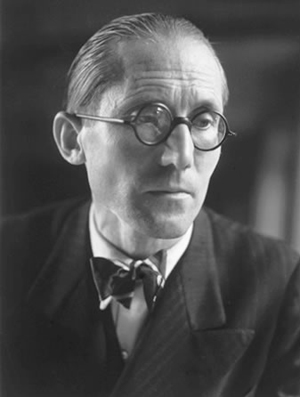
A
B
C
D
E
F
G
H
I
J
K
L
M
N
O
P
Q
R
S
T
U
V
W
X
Y
Z
- A -
- A. Eugene Kohn, architect of soaring skyscrapers, dies aged 92 - "In a statement, Kohn Pedersen Fox (KPF), whose best-known projects include New York's One Vanderbilt and the Shanghai World Financial Center, described Kohn's architectural legacy as 'enduring.'"
- A. JAMES SPEYER - (1913-1986).
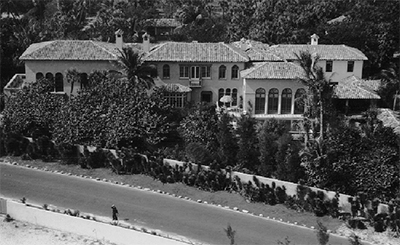 - Addison Mizner - (1872-1933). American resort architect whose Mediterranean Revival and Spanish Colonial Revival style interpretations left an indelible stamp on South Florida, where it continues to inspire architects and land developers.
- ADOLF LOOS - (1870-1933).
- Albert Kahn - (1869-1942). Was the foremost American industrial architect of his day. He is sometimes called the "architect of Detroit". As of 2006, approximately 60 Kahn buildings were listed on the National Register of Historic Places.
- ALVAR AALTO - (1898-1976). Finnish architect and designer. His work includes architecture, furniture, textiles and glassware. What is typical for his entire career, however, is a concern for design as a Gesamtkunstwerk, a total work of art; whereby he – together with his first wife Aino Aalto – would design not just the building, but give special treatments to the interior surfaces and design furniture, lamps, and furnishings and glassware.
 - ANDREA PALLADIO - (1508-1580). Italian architect active in the Republic of Venice.
- ANDRÉ LE NÔTRE - (1613-1700). French landscape architect and the principal gardener of King Louis XIV of France.
 - Ange-Jacques Gabriel - (1698-1782). The most prominent French architect of his generation.
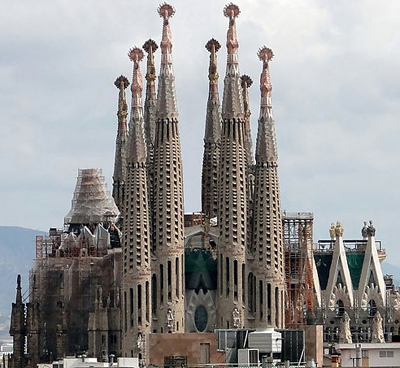 - ANTONI GAUDI - (1852-1926). Architect of the Basílica i Temple Expiatori de la Sagrada Família, commonly known as the Sagrada FamÍlia (1882-2026/2028(estimate)), Barcelona, Catalonia, Spain.
- Vatican puts Sagrada FamÍlia architect on the path to sainthood - "Antoni Gaudí, the celebrated Catalan long nicknamed 'God’s architect' for designing Barcelona’s Sagrada Família, has been put on the path to sainthood by the Vatican."
- Apollodorus of Damascus - Syrian-Greek engineer, architect, designer and sculptor from Damascus, Roman Syria, who flourished during the 2nd century AD. A favourite of Trajan, for whom he constructed Trajan's Bridge over the Danube, for the 105-106 campaign in Dacia. He also designed the Forum Trajanum and Trajan's Column within the city of Rome, beside several smaller projects. Apollodorus also designed the triumphal arches of Trajan at Beneventum and Ancona. He is widely credited as the architect of the third iteration of the Pantheon.
- ARNE JACOBSEN - (1902-1971). Danish architect and designer. He is remembered for his contribution to architectural Functionalism as well as for the worldwide success he enjoyed with simple but effective chair designs.
- Arthur Joseph Davis - (1878-1951). He was the co-partner in the firm Mewes & Davis, with Charles Mewès. The firm designed the elevations and interior decoration of the London Ritz Hotel which introduced modern French comfort and luxury enabled by an innovative steel frame construction.
A
B
C
D
E
F
G
H
I
J
K
L
M
N
O
P
Q
R
S
T
U
V
W
X
Y
Z
- B -
 - Baldassare Longhena - (1598-1682). Italian architect, who worked mainly in Venice, where he was one of the greatest exponents of Baroque architecture of the period.
- Baldassare Peruzzi - (1481-1536).
 - Balthasar Neumann - (1687-1753). German military artillery engineer and architect who developed a refined brand of Baroque architecture, fusing Austrian, Bohemian, Italian, and French elements to design some of the most impressive buildings of the period, including the Würzburg Residence and the Basilica of the Fourteen Holy Helpers, called Vierzehnheiligen in German.
- BARON HAUSSMAN - (1809-1891). Georges-Eugène Haussmann was a French civic planner whose name is associated with the rebuilding of Paris.
- Bertram Goodhue - (1869-1924).
- BRUNO PAUL - (1874-1968). Was a German architect, illustrator, interior designer, and furniture designer.
- BRUNO TAUT - (1880-1938).
- BUCKMINSTER FULLER - (1895-1983).
A
B
C
D
E
F
G
H
I
J
K
L
M
N
O
P
Q
R
S
T
U
V
W
X
Y
Z
- C -
 - CALLICRATES - (5th century BC). Architect with Ikitinos of the Parthenon.
- Carlo Mollino - (1905-1973). Was an Italian architect, designer, photographer and educator. Thanks to an extended apprenticeship with his civil engineer father before, during, and after studying architecture, Carlo Mollino was highly skilled in a range of building technologies and materials while commanding all aspects of the construction process (for example he produces working drawings for the doors and windows of most of his buildings).
- Carlo Scarpa - (1906-1978). Was an Italian architect, influenced by the materials, landscape, and the history of Venetian culture, and Japan.
- CASS GILBERT - (1859-1934). Was a prominent American architect. An early proponent of skyscrapers, his works include the Woolworth Building, the United States Supreme Court building, the state capitols of Minnesota, Arkansas and West Virginia; and the Saint Louis Art Museum and Public Library. His public buildings in the Beaux Arts style reflect the optimistic American sense that the nation was heir to Greek democracy, Roman law and Renaissance humanism.
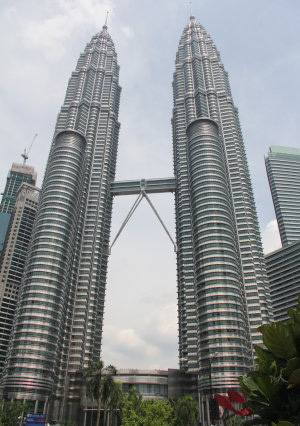 - CÉsar Pelli - (1926-2019). Was an Argentine-American architect who designed some of the world's tallest buildings and other major urban landmarks. Some of his most notable contributions included the Petronas Towers in Kuala Lumpur and the World Financial Center in New York City.
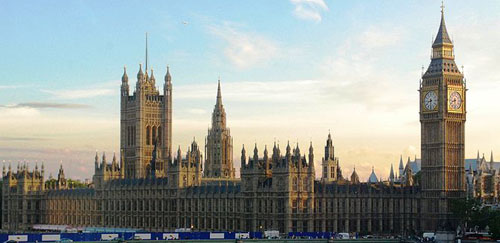 - CHARLES BARRY - (1795-1860). Best known for his role in the rebuilding of the Palace of Westminster (also known as the Houses of Parliament) in London during the mid-19th century.
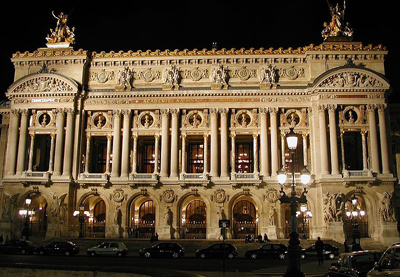 - CHARLES GARNIER - (1825-1898). Designer of the OpÉra de Paris and the OpÉra de Monte-Carlo.
- Charles Girault - (1851-1932). In 1905 he was chosen by Leopold II of Belgium to design the Arcades du Cinquantenaire in Brussels; also for Brussels, he designed the Royal Museum for Central Africa, begun in 1904 and finished in 1910.
- CHARLES MEWÈS - (1858-1914). Designed Hôtel Ritz Paris, London & Madrid, as well as Carlton Hotel, London.
- Charlotte Perriand - (1903-1999). Was a French architect and designer. Her work aimed to create functional living spaces in the belief that better design helps in creating a better society. In her article "L'Art de Vivre" from 1981 she states "The extension of the art of dwelling is the art of living - living in harmony with man's deepest drives and with his adopted or fabricated environment."
 - CHRISTOPHER WREN - (1632-1723). Responsible for rebuilding 51 churches in the City of London after the Great Fire in 1666, including his masterpiece, St. Paul's Cathedral, completed in 1710.
- Claude Nicolas Ledoux - (1736-1806). One of the earliest exponents of French Neoclassical architecture. He used his knowledge of architectural theory to design not only domestic architecture but also town planning; as a consequence of his visionary plan for the Ideal City of Chaux, he became known as a utopian.
 - CLAUDE PERRAULT - (1613-1688). Architect of the eastern range of the Louvre Palace.
- C. P. H. Gilbert - (1861-1952). Was an American architect of the late-19th and early-20th centuries best known for designing townhouses and mansions.
- Cross and Cross - (1907-1942). Known as Old New York City Society's architectural firm of choice.
 - Cyrus L. W. Eidlitz - (1853-1921). New York architect best known for designing One Times Square, the former New York Times Building on Times Square.
A
B
C
D
E
F
G
H
I
J
K
L
M
N
O
P
Q
R
S
T
U
V
W
X
Y
Z
- D -
- DANIEL HUDSON BURNHAM - (1846-1912).
- DAVID HAID - (1928-1993).
- Decimus Burton - (1800-1881). English architect and garden designer. A protegé of John Nash.
- Detlef Lienau - (1818-1887). Credited with having introduced the French style to American building construction, notably the mansard roof and all its decorative flourishes, aka known as German Renaissance.
 - DONATO BRAMANTE - (1444–1514). Architect of St. Peter's Basilica.
A
B
C
D
E
F
G
H
I
J
K
L
M
N
O
P
Q
R
S
T
U
V
W
X
Y
Z
- E -
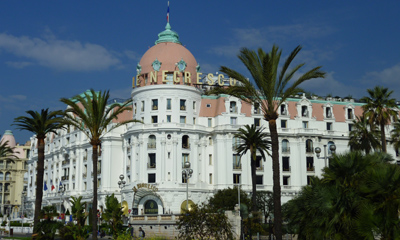 - Édouard-Jean Niermans - (1859-1928). Famous French architect of Dutch origins during the Belle Époque. Hôtel Negresco founded by Henri Négresco was designed by Édouard Niermans in 1912 on the promenade des Anglais in Nice.
- Edward Durell Stone - (1902-1978).
- EDWIN LUTYENS - (1869-1944). Known for imaginatively adapting traditional architectural styles to the requirements of his era. He designed many English country houses. He has been referred to as "the greatest British architect" and is known best for having an instrumental role in designing and building a section of the metropolis of Delhi, known as New Delhi, India.
- EERO SAARINEN - (1910-1961). Finnish American architect and industrial designer of the 20th century famous for varying his style according to the demands of the project: simple, sweeping, arching structural curves or machine-like rationalism.
- Erich Mendelsohn - (1887-1953).
- Ernst Friedrich Zwirner - (1802-1861). Jewish German architect, known for his expressionist architecture in the 1920s, as well as for developing a dynamic functionalism in his projects for department stores and cinemas.
- EugÈne Viollet-le-Duc - (1814-1879). French architect and author who restored many prominent medieval landmarks in France, including those which had been damaged or abandoned during the French Revolution. His major restoration projects included Notre-Dame de Paris, the Basilica of Saint Denis, Mont Saint-Michel, Sainte-Chapelle, and the medieval walls of the city of Carcassonne.
A
B
C
D
E
F
G
H
I
J
K
L
M
N
O
P
Q
R
S
T
U
V
W
X
Y
Z
- F -
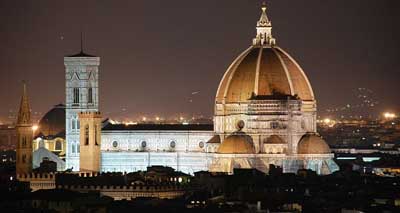 - Filippo Brunelleschi - (1377-1446). One of the foremost architects and engineers of the Italian Renaissance. He is perhaps most famous for his discovery of perspective and for engineering the dome of the Florence Cathedral.
- Francesco Borromini - (1599-1667).
- Francis Fleetwood - (1947-2015). Architect Who Transformed the Hamptons.
- FRANÇOIS MANSART - (1598-1666). Mansart, as he is generally known, made extensive use of a four-sided, double slope gambrel roof punctuated with windows on the steeper lower slope, creating additional habitable space in the garrets that ultimately became named after him - the mansard roof.
 - FRANK LLOYD WRIGHT - (1867-1959). American architect, designer, writer, and educator. He designed more than 1,000 structures over a creative period of 70 years. Wright believed in designing in harmony with humanity and the environment, a philosophy he called organic architecture. Architect of the Solomon R. Guggenheim Museum and the Fallingwater / Kaufmann Residence.
- Frederick John Kiesler - (1890-1965). Austrian-American architect, theoretician, theater designer, artist & sculptor.
- FREDERICK LAW OLMSTED - (1822-1903). Father of American landscape architecture.
- Frederick Sterner - (1862-1931).
- FRIEDENSREICH HUNDERTWASSER - (1928-2000).
- Fumihiko Maki, credited with fusing East with West, has died at 95 - "Japanese architect Fumihiko Maki, who won the prestigious Pritzker Prize for designs praised as smartly and artfully fusing the East with the West, has died. He was 95. In the U.S., Maki’s projects included the Yerba Buena Center for the Arts in San Francisco and 4 World Trade Center in New York."
A
B
C
D
E
F
G
H
I
J
K
L
M
N
O
P
Q
R
S
T
U
V
W
X
Y
Z
- G -
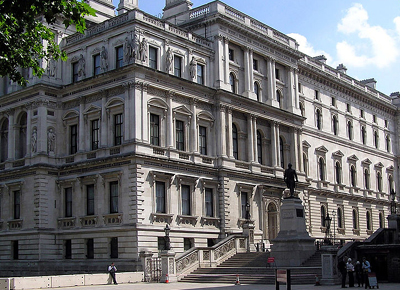 - GEORGE EDMUND STREET - (1824-1881). Leading practitioner of the Victorian Gothic revival and is perhaps best known as the architect of the Royal Courts of Justice, on the Strand, London.
- GEORGE GILBERT SCOTT - (1811-1878). Designer of the Foreign and Commonwealth Office, Whitehall, London, U.K. (1861-1868).
 - GERHARD VON RILE - (c. 1210/1215-1271). Cologne Cathedral’s first master builder.
- Giacomo della Porta - (c. 1533-1602). Architect and sculptor, who worked on many important buildings in Rome, including St. Peter's Basilica.
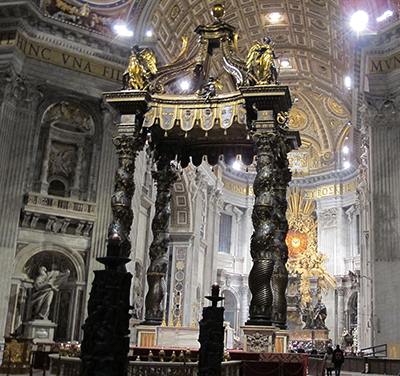 - Gian Lorenzo Bernini - (1598-1680). Italian artist and a prominent architect who worked principally in Rome. He was the leading sculptor of his age, credited with creating the Baroque style of sculpture.
- GiÒ Ponti - (1891-1979). One of the most important Italian architects, industrial designers, furniture designers, artists, and publishers of the twentieth century.
- Giulio Romano - (c. 1499-1546).
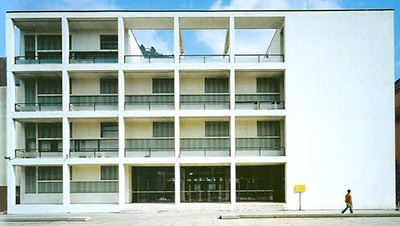 - Giuseppe Terragni - (1904-1943). Was an Italian architect who worked primarily under the fascist regime of Benito Mussolini and pioneered the Italian modern movement under the rubric of Rationalism. His most famous work is the Casa del Fascio built in Como, northern Italy.
A
B
C
D
E
F
G
H
I
J
K
L
M
N
O
P
Q
R
S
T
U
V
W
X
Y
Z
- H -
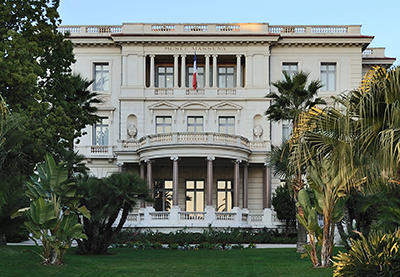 - HANS-GEORG TERSLING - (1857-1920). Danish architect who lived and worked for most of his life on the French Riviera where he became one of the most significant and productive architects of the Belle Époque. His work mainly consisted of designing mondain hotels, villas and mansions for members of the French and European aristocracy and other elite who resided in the area.
 - Hector Guimard - (1867-1942). Best-known representative of the French Art Nouveau style of the late nineteenth and early twentieth centuries.
- Hector Lefuel - (1810-1880). French architect, best known for his work on the Palais du Louvre, including Napoleon III's Louvre expansion and the reconstruction of the Pavillon de Flore.
- HENRY HOLLAND - (1745-1806).
 - HENRY JANEWAY HARDENBERGH - (1847-1918). Best known for his hotels and apartment buildings: e.g. Plaza Hotel, Waldorf-Astoria Hotel, Dakota apartment building, New York City, NY, U.S.A.
- HonorÉ Daumet - (1826-1911). French architect. Reconstruction of the ChÂteau de Chantilly, 1875–1882.
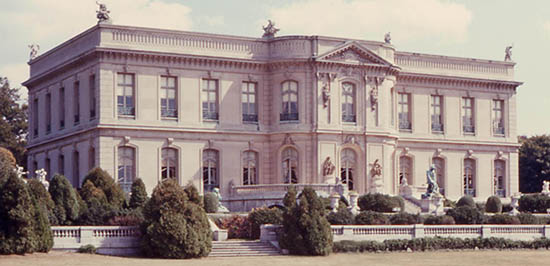 - HORACE TRUMBAUER - (1868-1938). Prominent American architect of the Gilded Age, known for designing residential manors for the wealthy. Trumbauer's massive palaces flattered the egos of his "robber baron" clients, but were dismissed by his professional peers. Today, however, he is hailed as one of America's premier architects, with his buildings drawing critical acclaim even to this day.
A
B
C
D
E
F
G
H
I
J
K
L
M
N
O
P
Q
R
S
T
U
V
W
X
Y
Z
- I -
 - IKTINOS - (5th century BC). Architect with Callicrates of the Parthenon.
- IMHOTEP - (2655-2600 BC). Considered to be the first architect known by name.
 - INIGO JONES - (1573-1652). Designed the Banqueting House, Whitehall, London, U.K. (1619-1622).
- ISAMU NOGUCHI - (1904-1988).
- Ivar Tengbom - (1878-1968).
A
B
C
D
E
F
G
H
I
J
K
L
M
N
O
P
Q
R
S
T
U
V
W
X
Y
Z
- J -
- JAMES RUPERT MILLER - (1869-1946).
- JAMES STIRLING - (1926-1992).
- JEAN PROVÉ - (1901-1984).
 - Johann Bernhard Fischer von Erlach - (1656-1723). Was an Austrian architect, sculptor, and architectural historian whose Baroque architecture profoundly influenced and shaped the tastes of the Habsburg Empire. His major works include Schönbrunn Palace, Karlskirche, and the Austrian National Library in Vienna, and Schloss Klessheim, Holy Trinity Church, and the Kollegienkirche in Salzburg.
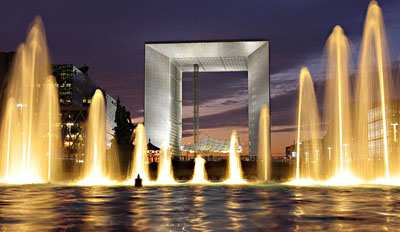 - JOHAN OTTO VON SPRECKELSEN - (1929-1987).
 - John Carl Warnecke - (1919-2010). Was an architect based in San Francisco, California, who designed numerous notable monuments and structures in the Modernist, Bauhaus, and other similar styles. He was an early proponent of contextual architecture. Among his more notable buildings and projects are the Hawaii State Capitol building, the John F. Kennedy Eternal Flame memorial gravesite at Arlington National Cemetery, and the master plan for Lafayette Square.
 - JOHN LAUTNER - (1911-1994). Influential American architect whose work in Southern California combined progressive engineering with humane design and dramatic space-age flair.
- JOHN NASH - (1752-1835). British architect responsible for much of the layout of Regency London.
- John Russell Pope - (1874-1937). American architect whose firm is widely known for designing major public buildings, including the National Archives and Records Administration building (completed in 1935), the Jefferson Memorial (completed in 1943) and the West Building of the National Gallery of Art (completed in 1941), all in Washington, DC.
- JOHN VANBRUGH - (1664-1726). Best known as the designer of Blenheim Palace and Castle Howard.
- JOHN WOOD, THE ELDER - (1704-1754).
- JOHN WOOD, THE YOUNGER - (1728-1782).
- Josef Hoffmann - (1870-1956).
- JOSEPH PAXTON - (1803-1865).
- Juan Bautista Villalpando - (1552-1608).
 - JULES HARDOUIN-MANSART - (1646-1708). French architect whose work is generally considered to be the apex of French Baroque architecture, representing the power and grandeur of Louis XIV. Hardouin-Mansart was one of the most important European architects of the seventeenth century.
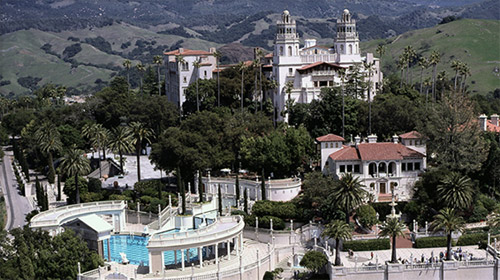 - Julia Morgan - (1872-1957). American architect in California. She designed more than 700 buildings in California during a long and prolific career. She is best known for her work on Hearst Castle in San Simeon, California, U.S.A.
 - JØRN UTZON - (1918-2008). Designer of the SYDNEY OPERA HOUSE, Sydney, New South Wales, Australia. Completed 1973.
A
B
C
D
E
F
G
H
I
J
K
L
M
N
O
P
Q
R
S
T
U
V
W
X
Y
Z
- K -
- Karl Friedrich Schinkel - (1781-1841). Prussian architect, city planner, and painter who also designed furniture and stage sets. Schinkel was one of the most prominent architects of Germany and designed both neoclassical and neogothic buildings.
- KenzŌ Tange - (1913-2005). Japanese architect, and winner of the 1987 Pritzker Prize for architecture. He was one of the most significant architects of the 20th century, combining traditional Japanese styles with modernism, and designed major buildings on five continents.
A
B
C
D
E
F
G
H
I
J
K
L
M
N
O
P
Q
R
S
T
U
V
W
X
Y
Z
- L -
 - LE CORBUSIER - (1887-1965). Architect, designer, painter, urban planner, writer, and one of the pioneers of what is now called modern architecture.
 - Leon Battista Alberti - (1404-1472). Italian humanist author, artist, architect, poet, priest, linguist, philosopher and cryptographer; he epitomised the Renaissance Man.
 - LOUIS LE VAU - (1612-1670). Architect of the Palace of Versailles.
- Louis Sullivan - (1856-1924). American architect, and has been called a "father of skyscrapers" and "father of modernism". He was an influential architect of the Chicago School, a mentor to Frank Lloyd Wright, and an inspiration to the Chicago group of architects who have come to be known as the Prairie School.
 - LUDWIG MIES VAN DER ROHE - (1886-1969). Designed in 1958 what is often regarded as the pinnacle of the modernist high-rise architecture, the Seagram Building in New York City.
A
B
C
D
E
F
G
H
I
J
K
L
M
N
O
P
Q
R
S
T
U
V
W
X
Y
Z
- M -
- MARCEL BREUER - (1902-1981).
- Marion Sims Wyeth - (1889–1982) was an American architect. He designed mansions including Mar-a-Lago in Palm Beach, Florida, and Shangri La in Honolulu, Hawaii.
- Mart Stam - (1899-1986). Dutch architect, urban planner, and furniture designer.
- Martin Wagner - (1885-1957).
- Maurice Fatio - (1897–1943). Swiss-born American architect who between 1925-1943 designed 137 homes in Palm Beach, Florida, U.S.A.
- McKim, Mead & White - was an American architectural firm that thrived at the turn of the twentieth century. The firm's founding partners were Charles Follen McKim (1847–1909), William Rutherford Mead (1846–1928) and Stanford White (1853–1906). They hired many other architects, partners, associates, designers and draftsmen, who came to prominence during or after their time at the firm.
- MEYER & HOLLER - (1905-1932).
 - MICHELANGELO - (1475-1564). Architect of St. Peter's Basilica.
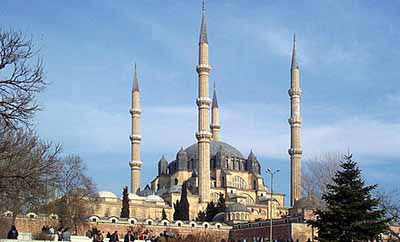 - Mimar Sinan - (c. 1489/1490-1588). The chief Ottoman architect (Turkish: mimar) and civil engineer for sultans Suleiman the Magnificent, Selim II, and Murad III. He was responsible for the construction of more than 300 major structures.
 - Morris Lapidus - (1902-2001). The architect of Neo-baroque Miami Modern hotels that have since come to define the 1950s resort-hotel style synonymous with Miami and Miami Beach.
A
B
C
D
E
F
G
H
I
J
K
L
M
N
O
P
Q
R
S
T
U
V
W
X
Y
Z
- N -
 - NGUYEN AN - (died 1453). Principal designer and a chief builder of The Forbidden City, Beijing, China.
 - NICHOLAS HAWKSMOOR - (1661-1736). One of the great masters of the English Baroque. Hawksmoor worked alongside the principal architects of the time, Christopher Wren and John Vanbrugh, and contributed to the design of some of the most notable buildings of the period, including St Paul's Cathedral, Wren's City of London churches, Blenheim Palace and Castle Howard. Easton Neston is thought to be the only mansion which was solely the work of Hawksmoor.
- Nicolai Eigtved - (1701-1754). Leading proponent of the French rococo style in Danish architecture during the 1730s-1740s.
- NICOLAS-HENRI JARDIN - (1720-1799). Neoclassical architect.
A
B
C
D
E
F
G
H
I
J
K
L
M
N
O
P
Q
R
S
T
U
V
W
X
Y
Z
- O -
- Ogden Codman Jr. - (1863-1951). American architect and interior decorator in the Beaux-Arts styles, and co-author with Edith Wharton of The Decoration of Houses (1897), which became a standard in American interior design. In 1920, Codman left New York to return to France, where he spent the last thirty-one years of his life at the Château de Grégy, wintering at Villa Leopolda in Villefranche-sur-Mer, which he created by assembling a number of vernacular structures and their sites: it is his masterpiece, the fullest surviving expression of his esthetic.
- OSCAR NIEMEYER - (1907-2012). Pioneer in exploring the formal possibilities of reinforced concrete solely for their aesthetic impact.
- Otto Wagner - (1841-1918). Austrian architect and urban planner, known for his lasting impact on the appearance of his home town Vienna, to which he contributed many landmarks.
A
B
C
D
E
F
G
H
I
J
K
L
M
N
O
P
Q
R
S
T
U
V
W
X
Y
Z
- P -
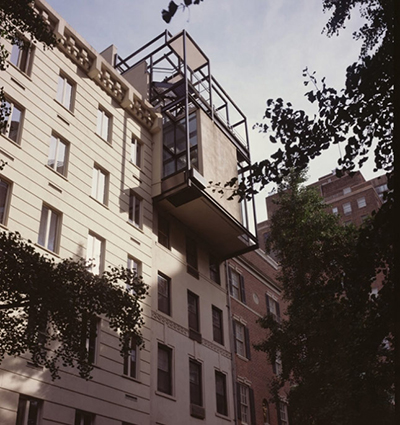 - Paul Rudolph - (1918-1997). American architect and the chair of Yale University's Department of Architecture for six years, known for his use of concrete and highly complex floor plans. His most famous work is the Yale Art and Architecture Building (A&A Building also known as Rudolph Hall), a spatially complex brutalist concrete structure.
- PAUL TROOST - (1878-1934).
- PETER BEHRENS - (1868-1940).
- Philibert de l'Orme - (1514-1570). One of the great masters of the French Renaissance.
 - Philip Gengembre Hubert - (1830-1911). Was a French-American architect and founder of the New York City architectural firm Hubert & Pirsson (later Hubert, Pirsson, and Company, active from c. 1870 to 1888, and Hubert, Pirsson, and Haddick, active from 1888 to 1898) with James W. Pirsson (1833–1888). The firm produced many of the city's "Gilded Age" finest buildings, including hotels, churches and residences. Noted works: The Chelsea (1883), twelve-story residential hotel.
- PHILIP JOHNSON - (1906-2005).
- Pierre Chareau - (1883-1950).
- Pierre Koenig - (1925-2004).
- PIET BLOM - (1934-1999).
A
B
C
D
E
F
G
H
I
J
K
L
M
N
O
P
Q
R
S
T
U
V
W
X
Y
Z
- R -
- Raymond Hood - (1881-1934). American architect who worked in the Art Deco style. Principal architect was Raymond Hood for Rockefeller Center.
- Richard Boyle, 3rd Earl of Burlington - (1694-1753). He is remembered for bringing Palladian architecture to Britain and Ireland. His major projects include Burlington House, Westminster School, Chiswick House and Northwick Park.
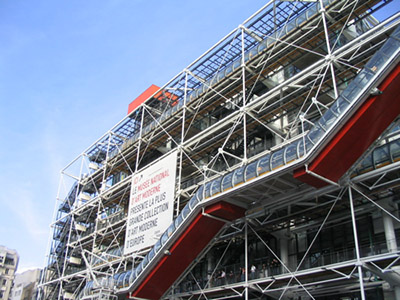 - Richard George Rogers, Baron Rogers of Riverside - (1933-2021). Was an Italian-born British architect noted for his modernist and functionalist designs in high-tech architecture. Rogers was perhaps best known for his work on the Pompidou Centre in Paris, the Lloyd's building and Millennium Dome both in London, the Senedd building in Cardiff, and the European Court of Human Rights building in Strasbourg. He was a winner of the RIBA Gold Medal, the Thomas Jefferson Medal, the RIBA Stirling Prize, the Minerva Medal, and Pritzker Prize. He was a Senior Partner at Rogers Stirk Harbour + Partners, previously known as the Richard Rogers Partnership, until 30 June 2020.
 - RICHARD MORRIS HUNT - (1827-1895). American architect of the nineteenth century and a preeminent figure in the history of American architecture. Hunt was, according to design critic Paul Goldberger writing in The New York Times, "American architecture's first, and in many ways its greatest, statesman." Aside from Hunt's sculpting of the face of New York City, including designs for the facade and Great Hall of the Metropolitan Museum of Art, the pedestal of the Statue of Liberty and many Fifth Avenue mansions lost to the wrecking ball, Hunt founded both the American Institute of Architects and the Municipal Art Society.
- Richard Neutra - (1892-1970).
- Robert Adam - (1728-1792). Was a Scottish neoclassical architect, interior designer and furniture designer. He developed the "Adam Style", and his theory of "movement" in architecture, based on his studies of antiquity and became one of the most successful and fashionable architects in the country.
 - Robert Mallet-Stevens - (1886-1945). Along with Le Corbusier he is widely regarded as the most influential figure in French architecture in the period between the two World Wars.
- Robert Smythson - (1535-1614).
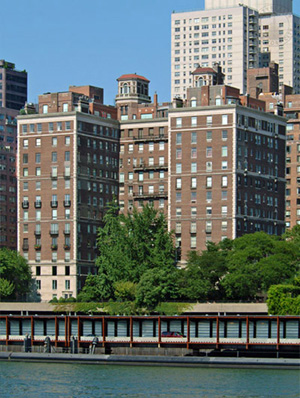 - Rosario Candela - (1890-1953). Italian American architect who achieved renown through his apartment building designs in New York City, primarily during the boom years of the 1920s. He is credited with defining the city's characteristic terraced setbacks and signature penthouses. Over time, Candela's buildings have become some of New York's most coveted addresses, most of which were erected on Fifth & Park avenues before World War II, among others 740 Park Avenue - "at one time considered (and still thought to be by some) the most luxurious and powerful residential building in New York City."
- Rudolph Schindler - (1887-1953).
A
B
C
D
E
F
G
H
I
J
K
L
M
N
O
P
Q
R
S
T
U
V
W
X
Y
Z
- S -
- Samuel Abraham Marx - (1885-1964). Was an American architect, designer and interior decorator. He is generally considered a modernist, influenced by the International style. House Beautiful magazine (1948) said about his works “it’s frequently hard to say where the architecture ends and the furniture begins.”
 - Sanderson Miller - (1716-1780). English pioneer of Gothic revival architecture and landscape designer. He is noted for adding follies or other Picturesque garden buildings and features to the grounds of an estate.
- Severin Jensen - (1723-1809). Danish architect who worked mainly in the Duchy of Courland and Semigallia. In 1772 he became a chief architect of Duke Peter von Biron, and in 1795 the chief architect of the Courland Governorate. In 1803 Jensen left Courland and traveled to Italy where he participated in the building of Royal Palace of Caserta. He worked in the style of Classicism which was very popular in Peter von Biron's court.
 - Stanford White - (1853-1906). American architect and partner in the architectural firm of McKim, Mead & White, the frontrunner among Beaux-Arts firms. He designed a long series of houses for the rich, and numerous public, institutional, and religious buildings. His design principles embodied the "American Renaissance".
- SVERRE FEHN - (1924-2009).
A
B
C
D
E
F
G
H
I
J
K
L
M
N
O
P
Q
R
S
T
U
V
W
X
Y
Z
- T -
 - Theophil Hansen - (1813-1891). Danish architect who later became an Austrian citizen. He became particularly well known for his buildings and structures in Athens and Vienna, and is considered an outstanding representative of neoclassicism.
- Thomas Cubitt - (1788-1855). English master builder, notable for developing many of the historic streets and squares of London, especially in Belgravia, Pimlico and Bloomsbury.
- TIMOTHY L. PFLUEGER - (1892-1946).
A
B
C
D
E
F
G
H
I
J
K
L
M
N
O
P
Q
R
S
T
U
V
W
X
Y
Z
- V -
- Victor Horta - (1861-1947). Described him as "undoubtedly the key European Art Nouveau architect."
 - Vincenzo Scamozzi - (1548-1616). Italian architect and a writer on architecture, active mainly in Vicenza and Republic of Venice area in the second half of the 16th century. He was perhaps the most important figure there between Andrea Palladio, whose unfinished projects he inherited at Palladio's death in 1580, and Baldassarre Longhena, Scamozzi's only pupil.
- VITRUVIUS - (c. 80–70 BC - c. 15 BC).
A
B
C
D
E
F
G
H
I
J
K
L
M
N
O
P
Q
R
S
T
U
V
W
X
Y
Z
- W -
 - WALTER GROPIUS - (1883-1969). Founder of the Bauhaus School.
 - Warren and Wetmore - partnership between Whitney Warren (1864–1943) and Charles Wetmore (1866–1941), that had one of the most extensive practices of its time and was known for the designing of large hotels.
- WELLS COATES - (1895-1958).
 - Werner March - (1894-1976). His most famous work, Berlin's Olympic Stadium.
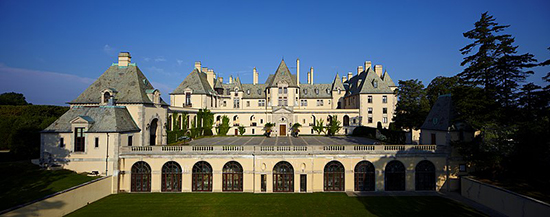 - William Adams Delano - (1874-1960). American architect, was a partner with Chester Holmes Aldrich in the firm of Delano & Aldrich. The firm worked in the Beaux-Arts tradition for elite clients in New York City, Long Island and elsewhere, building townhouses, country houses, clubs, banks and buildings for colleges and private schools. Moving on from the classical and baroque Beaux-Arts repertory, they often designed in the neo-Georgian and neo-Federal styles, and many of their buildings were clad in brick with limestone or white marble trim, a combination which came to be their trademark.
- WILLIAM KENT - (c. 1685-1748).
- WILLIAM OF SENS - (12th century).
- WILLIAM WURSTER - (1895-1973).
 - WILLIS POLK - (1867-1924). American architect best known for his work in San Francisco, California.
Living Architects: A-Z

A
B
C
D
E
F
G
H
I
J
K
L
M
N
O
P
Q
R
S
T
U
V
W
X
Y
Z
- A -
- 3XN - founded 1986.
- AEDAS - provides consultancy services in architecture, interior design, masterplanning, landscape, urban design and building consultancy in Asia, the Middle East, Europe and the Americas.
- Amanda Levete - Stirling Prize-winning British architect.
- ARUP - providing engineering, design, planning, project management and consulting services for all aspects of the built environment.
- ATKINS ARCHITECTURE - "We are a multinational community of 650 architects sharing a passion for excellence."
A
B
C
D
E
F
G
H
I
J
K
L
M
N
O
P
Q
R
S
T
U
V
W
X
Y
Z
- B -
- BDP - "Creating Places for People." The largest interdisciplinary practice of architects, designers, engineers and urbanists in Europe.
- Bjarke Ingels - Danish architect, founder and creative partner of Bjarke Ingels Group (BIG). Since 2009, Ingels has won numerous architectural competitions. He moved to New York City in 2012, where in addition to the VIA 57 West, BIG won a design contest after Hurricane Sandy for improving Manhattan's flood resistance, and are now designing the new Two World Trade Center building. In 2011, The Wall Street Journal named Ingels Innovator of the Year for architecture, and in 2016 TIME Magazine named him one of the 100 Most Influential People.
- BIG | BJARKE INGELS GROUP - founded 2005. A Copenhagen and New York based group of architects, designers, and builders operating within the fields of architecture, urbanism, research and development. The office is currently involved in a large number of projects throughout Europe, North America, Asia and the Middle East. As of 2016, the office has over 400 employees from 25 countries.
A
B
C
D
E
F
G
H
I
J
K
L
M
N
O
P
Q
R
S
T
U
V
W
X
Y
Z
- C -
- C.F. MØLLER ARCHITECTS - one of Scandinavia's oldest and largest architectual pratices.
 - Chetwoods - "Explore | Create | Make."
- CHRISTIAN DE PORTZAMPARC
- COSTAS KONDYLIS DESIGN - New York architectural firm specializing in modern hi-rise residential style architecture and custom interior design.
- C. Y. Lee - Chinese architect based in Taiwan. He directed the design of Taipei 101, the world's tallest skyscraper at the time of completion, in 2004.
A
B
C
D
E
F
G
H
I
J
K
L
M
N
O
P
Q
R
S
T
U
V
W
X
Y
Z
- D -
- DANIEL LIBESKIND - Polish-American architect, artist, professor and set designer. On February 27, 2003, Libeskind won the competition to be the master plan architect for the reconstruction of the World Trade Center site in Lower Manhattan, New York City, U.S.A.
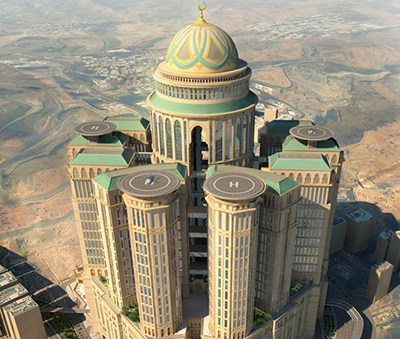 - Dar Al-Handasah - since 1956. Multi-disciplinary architecture and engineering consultancy. Has served over 950 different clients in 63 countries with a staff of 6900 operating from 45 offices in the Middle East, Africa, Asia and Europe with five design centres in Beirut, Cairo, London, Pune and Amman.
- David Chipperfield Architects - "David Chipperfield Architects is an international practice founded in 1985 with offices in London, Berlin, Milan, Shanghai and Santiago de Compostela." Few architects in history have had the honor and privilege of intervening in the famous St. Mark's Square in Venice — a tourist landmark of incomparable historical value to humanity. Sir David Chipperfield is one of them. As if that was not enough, he also left his mark on another project of inestimable value: the Neue Nationalgalerie, designed originally by Mies van der Rohe in Berlin. The four centuries that separate the design from its restoration seem to pose no difficulties for the 2023 Pritzker Prize winner, who rejects an international style of architecture in search of a trait that highlights local qualities. (ArchDaily).
- DILLER SCOFIDIO + RENFRO
- Dymitr Malcew
A
B
C
D
E
F
G
H
I
J
K
L
M
N
O
P
Q
R
S
T
U
V
W
X
Y
Z
- F -
- fernando romero architects - currently the most exposed and successful young Latin American architect.
- FOSTER + PARTNERS
- FRANCIS DESIGN
- FRANK GEHRY - Canadian-American Pritzker Prize-winning architect based in Los Angeles.
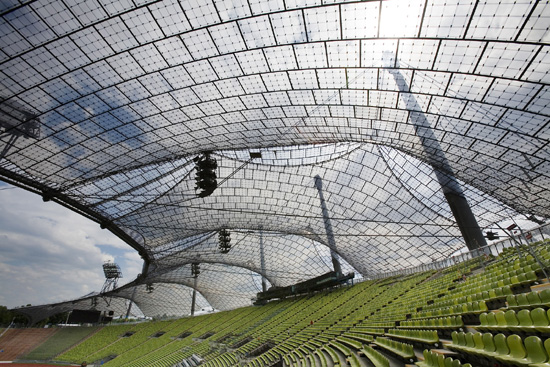 - Frei Otto - the world's leading authority on lightweight tensile and membrane structures, and has pioneered advances in structural mathematics and civil engineering.
- FRITS VAN DONGEN
A
B
C
D
E
F
G
H
I
J
K
L
M
N
O
P
Q
R
S
T
U
V
W
X
Y
Z
- G -
- GDS ARCHITECTS - an international practice with offices in Pasadena, Seoul and Taipei. The practice provides full architecture, master planning and interiors for clients in both the public and private sectors.
- Gehl Architects - urban research and design consulting firm based in Copenhagen, Denmark. It was founded in 2000 by Professor Jan Gehl and urban designer Helle Søholt as a continuation of Gehl's research within the area over the past four decades. The firm specialises in improving the quality of urban life by re-orienting city design towards the pedestrian and cyclist.
- GEHRY PARTNERS - founded 1962. "Gehry Partners, LLP is a full service firm with broad international experience in academic, commercial, museum, performance, and residential projects."
- GENSLER - global architecture, design, planning and consulting firm - 3,500+ professionals in more than 42 locations.
- GRAFTON ARCHITECTS
- GWATHMEY SIEGEL & ASSOCIATES ARCHITECTS
A
B
C
D
E
F
G
H
I
J
K
L
M
N
O
P
Q
R
S
T
U
V
W
X
Y
Z
- H -
- HEERIM - architects & planners.
- HERREROS ARQUITECTOS
 - HERZOG & DE MEURON - since 1978. Architects of the Beijing National Stadium - aka the 'Bird's Nest'.
A
B
C
D
E
F
G
H
I
J
K
L
M
N
O
P
Q
R
S
T
U
V
W
X
Y
Z
- I -
 - I. M. PEI - known as the last master of high modernist architecture.
A
B
C
D
E
F
G
H
I
J
K
L
M
N
O
P
Q
R
S
T
U
V
W
X
Y
Z
- J -
- Jan Gehl - Danish architect and urban design consultant based in Copenhagen whose career has focused on improving the quality of urban life by re-orienting city design towards the pedestrian and cyclist. He is a founding partner of Gehl Architects.
- JEAN DELOGNE - landscape designer.
- JEAN NOUVEL - the Wolf Prize in Arts in 2005 and the Pritzker Prize in 2008.
- JEAN-PHILIPPE NUEL - architecture and interior design.
- JÜRGEN MAYER-HERMANN - J. Mayer H.
A
B
C
D
E
F
G
H
I
J
K
L
M
N
O
P
Q
R
S
T
U
V
W
X
Y
Z
- K -
- Kengo Kuma - frequently compared to contemporaries Shigeru Ban & Kazuyo Sejima, Kuma is also noted for his prolific writings.
- KIM HERFORTH NIELSEN
- KPF | KOHN PEDERSEN FOX
A
B
C
D
E
F
G
H
I
J
K
L
M
N
O
P
Q
R
S
T
U
V
W
X
Y
Z
- M -
- MAD STUDIO - based in Beijing, China. It is headed by is Yansong Ma.
- M D Architects - Mewes & Davis - "A unique collection of valuable drawings, contemporary photographs, letters and planning documents tell the story of the partnership between two of the greatest designers of our age, Charles Mewès (1860 - 1914) and Arthur Joseph Davis (1878 - 1951). Between them they spanned architectural styling as flamboyant as The Ritz Hotel in London, built at the height of the ‘beaux arts’ period of decoration, to interiors for some of the world’s greatest liners including those from the The Hamburg - Amerika and Cunard Shipping Lines. Today their remarkable attention to detail is fully recognised - be it the production of ergonomically designed door handles or bathroom taps for the many and great hotels and private houses, or the highly decorated Royal Doulton porcelain, produced to complement the luscious interiors of restaurants and bars. Theirs was the age of elegance, high taste and excess, reflected in the buildings and monuments designed at the start of the 20c."
- MAJORELLE
- MORRIS ARCHITECTS - Architecture, landscape architecture, planning and interior design are the core disciplines practiced by seven Morris Architects studios.
- MVRDV
A
B
C
D
E
F
G
H
I
J
K
L
M
N
O
P
Q
R
S
T
U
V
W
X
Y
Z
- N -
 - NORMAN FOSTER - "Foster + Partners is a global studio for sustainable architecture, engineering, urbanism and industrial design, founded by Norman Foster in 1967. Since then, he, and the team around him, have established an international practice with a worldwide reputation. With offices across the globe, we work as a single studio that is both ethnically and culturally diverse."
A
B
C
D
E
F
G
H
I
J
K
L
M
N
O
P
Q
R
S
T
U
V
W
X
Y
Z
- O -
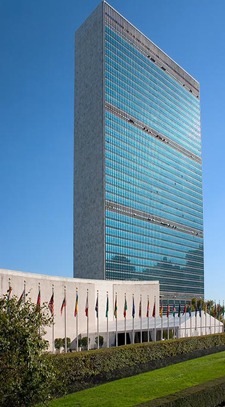 - OLE SCHEEREN
- OMA | OFFICE FOR METROPOLITAN ARCHITECTURE - the office is led by six partners – Rem Koolhaas, Ole Scheeren, Ellen van Loon, Reinier de Graaf, Shohei Shigematsu and Managing Partner, Victor van der Chijs – and employs a staff of around 220 of 35 nationalities.
A
B
C
D
E
F
G
H
I
J
K
L
M
N
O
P
Q
R
S
T
U
V
W
X
Y
Z
- P -
- PASCAL + WATSON ARCHITECTS - leading transport architects.
- PAUL ANDREU
- PAUL DE RUITER
- PEI COBB FREED & PARTNERS
- PEI PARTNERSHIP ARCHITECTS
- Perkins Eastman - international architecture, interior design, urban design, planning, landscape architecture, graphic design, and project management firm. Headquartered in New York City, U.S.A.
- PETER COOK
- PETER MARINO ARCHITECT - founded in 1978. Based in New York City.
- PETER RICH ARCHITECTS
- PETER VETSCH - known for building earth houses.
- PLT Planning and Architecture
- PTW
A
B
C
D
E
F
G
H
I
J
K
L
M
N
O
P
Q
R
S
T
U
V
W
X
Y
Z
- R -
- RAFAEL VINOLY ARCHITECTS
 - REM KOOLHAAS - in 2008 Time Magazine put him in their top 100 of The World's Most Influential People.
- RENZO PIANO BUILDING WORKSHOP | RPBW - born 14 September 1937) is an Italian architect. His notable buildings include the Centre Georges Pompidou in Paris (with Richard Rogers, 1977), The Shard in London (2012), and the Whitney Museum of American Art in New York City (2015) and Stavros Niarchos Foundation Cultural Center in Athens (2016). He won the Pritzker Architecture Prize in 1998.
- Richard Landry - Canadian-born American architect. Known as the "King of the Megamansion," he has designed many private residences for corporate moguls and celebrities in Los Angeles County, California.
- RICHARD MEIER & PARTNERS ARCHITECTS
- RMJM - "People Process Projects. Our work encompasses architecture, sustainable design,urbanism, masterplanning, interior design and research and development."
- Robert A. M. Stern - erhaps best known for his residential projects in New York City, which include 15 Central Park West, 20 East End Avenue, The Chatham, and The Brompton. Recently, Stern designed three skyscrapers, 220 Central Park South, 520 Park Avenue, and 30 Park Place, all of which will be amongst the tallest buildings in New York City upon completion.
- Robert Venturi - American architect, founding principal of the firm VSBA Architects, and one of the major architectural figures in the twentieth century.
- ROGERS STIRK HARBOUR + PARTNERS (RSHP) - since 1977. British architectural firm, founded in 1977 and originally known as the Richard Rogers Partnership. Its main offices are located in the Leadenhall Building, London, U.K.
- ROLAND CASTRO
- RTKL - global design practice comprised of 800+ professionals, with offices worldwide.
A
B
C
D
E
F
G
H
I
J
K
L
M
N
O
P
Q
R
S
T
U
V
W
X
Y
Z
- S -
- Sambuichi Architects - established in 1997 by Hiroshi Sambuichi.
- SANAA | Sejima and Nishizawa and Associates
- SANTIAGO CALATRAVA
- SAOTA - since 1986. "Architecture and Design." A leading firm of architects is driven by the dynamic combination of Stefan Antoni, Philip Olmesdahl, Greg Truen, Phillippe Fouché and Mark Bullivant who share a potent vision easily distinguished in their design. SAOTA has a global footprint with projects on six continents. We have a clear understanding of the place of design in the world and how to deliver architectural projects in diverse markets. Projects span over 86 countries, across 6 continents and in 143 cities.
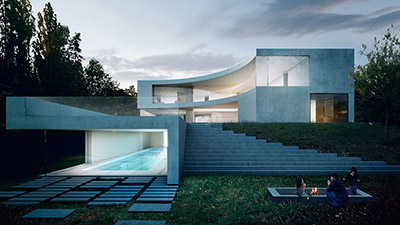 - Saunders Architecture - founded by the Canadian architect Todd Saunders in 1998. Saunders has lived and worked in Bergen since 1996. Bringing together dynamic building and material experimentation with traditional methods of craft, Bergen-based Saunders Architecture has worked on cultural and residential projects right across Norway, as well as England, Denmark, Italy, Sweden and Canada.
- SCHMIDT HAMMER LASSEN ARCHITECTS
- SCHOPFER ASSOCIATES
- SKIDMORE, OWINGS & MERRILL
- SnØhetta - since 1987. "We are Snøhetta. We create architecture, landscapes, interiors, product design
and graphic design." Snøhetta is a place nobody is from, but anyone can go to. Today, Snøhetta has grown to become an internationally renowned practice of architecture, landscape architecture, interior architecture, product, graphic, digital design and art, with 280 employees of more than thirty different nationalities, and an equal gender distribution. Our practice has a global presence, with offices spanning from Oslo, Paris, and Innsbruck, to New York, Hong Kong, Adelaide and San Francisco.
- STEVEN HOLL ARCHITECTS
- STUDIO DANIEL LIBESKIND
A
B
C
D
E
F
G
H
I
J
K
L
M
N
O
P
Q
R
S
T
U
V
W
X
Y
Z
- T -
- TADAO ANDO
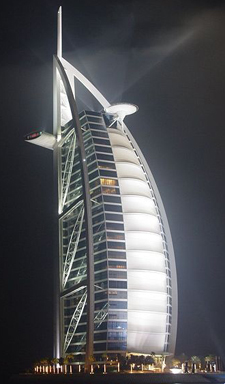 - TOM WRIGHT - his most famous design is the Burj Al Arab hotel in Dubai.
- Toyo Ito - awarded the Pritzker Prize in 2013.
A
B
C
D
E
F
G
H
I
J
K
L
M
N
O
P
Q
R
S
T
U
V
W
X
Y
Z
- V -
- VLA | VILHELM LAURITZEN ARCHITECTS
A
B
C
D
E
F
G
H
I
J
K
L
M
N
O
P
Q
R
S
T
U
V
W
X
Y
Z
- W -
- WALLACE E. CUNNINGHAM - innovative residential design.
- WAM Architecten - Wilfried van Winden.
- WATG - "Having worked in 160 countries and territories across six continents, WATG has designed more great hotels and resorts than any other firm on the planet."
A
B
C
D
E
F
G
H
I
J
K
L
M
N
O
P
Q
R
S
T
U
V
W
X
Y
Z
- Z -
- ZAHA HADID ARCHITECTS
- ZEIDLER PARTNERSHIP ARCHITECTS
Architecture
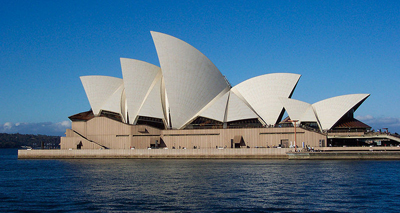 - AMERICA'S FAVORITE ARCHITECTURE - the top 150 chosen by The American Institute of Architects.
- ARCHITECTURE - aka "Mother of all the arts."
- BAUHAUS - archive-museum, Berlin.
- BEAUX-ARTS - Wikipedia.
- BIEDERMEIER - Wikipedia.
- LANDSCAPE ARCHITECTURE - Wikipedia.
- List of Art Deco architecture - Wikipedia.
- SKYSCRAPER NEWS - skyscrapers, cathedrals, modern architecture database, news, information and images.
- SKYSCRAPERPAGE.COM - "The world's finest resource for skyscraper and urbanism enthusiasts. A one-stop resource for the skyscraper enthusiast in everyone."
- WORLD'S TALLEST SCYCRAPERS - Houston Architecture's top 100.
- Beijing National Stadium
- CAN LIS - Danish Pritzer Prize Laureate architect Jørn Utzon's own houses in Mallorca, Balearic Islands, Spain.
- CHRYSLER BUILDING - New York City, NY, U.S.A.
- EMPIRE STATE BUILDING - New York City, NY, U.S.A.
- FLATIRON BUILDING - New York City, NY, U.S.A.
- GENERAL MOTORS BUILDING - New York City, NY, U.S.A.
- Louvre Palace - Paris, France.
- OpÉra de Paris - Paris, France.
- Palace of Versailles - Versailles, France.
- Parthenon - Athens, Greece.
- SEAGRAM BUILDING - New York City, NY, U.S.A.
- SHANGHAI WORLD FINANCE CENTER - Shanghai, China. 1,614 ft / 492 m 101 floors. Otherwise known as "The Vertical Complex City".
- St. Peter's Basilica - Vatican City.
- SYDNEY OPERA HOUSE - Sydney, Australia.
- TAIPEI 101 - Taipei, Taiwan.
- THE PETRONAS TWIN TOWERS - Kuala Lumpur, Malaysia.
- TURNING TORSO - Malmø, Sweden.
- VILLA CAPRA "LA ROTONDA" - Vicenza, Italy.
Architecture Events
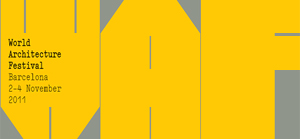 - World Architecture Festival 2023 shortlist - in pictures - "The World Architecture Festival’s 2023 shortlist has been announced, revealing projects from around the world spanning categories such as religion, energy, transport and health. This year’s festival will be held in Singapore from 29 November to 1 December, where shortlisted entries will present their projects to a 140-person judging panel in hopes of winning awards."
- World Architecture festival 2024 shortlist - in pictures - "The World Architecture festival’s 2024 shortlist has been announced, revealing projects from around the world spanning categories such as childcare, energy, transport and science. The live event will take place in Singapore from 6-8 November 2024. This year’s finalists represent 71 countries, with five shortlisted: Australia, China, India, Singapore and the United Kingdom."
- BIENNALE ARCHITETTURA 2025 | 19th INTERNATIONAL ARCHITURE EXHIBITION - Venice, May 10 - November 23. "The 19th International Architecture Exhibition will be held from Saturday 10 May to Sunday 23 November 2025 (pre-opening May 8 and 9), curated by the architect and engineer Carlo Ratti, who has commented: 'To face a burning world, architecture must harness all the intelligence around us. I am honored and humbled to have the opportunity to curate the Biennale Architettura 2025'."
- WORLD ARCHITECTURE FESTIVAL 2024 - November 6-8. Marina Bay Sands, Singapore. " World Architecture Festival (WAF) will take place in Singapore from 6 - 8 November 2024. Gain inspiration from the world's most innovative projects, participate in insightful seminars, and witness a live-judged awards programme unlike any other. It's the perfect opportunity to learn from the best, network with colleagues, and be at the forefront of architectural excellence."
|
|

